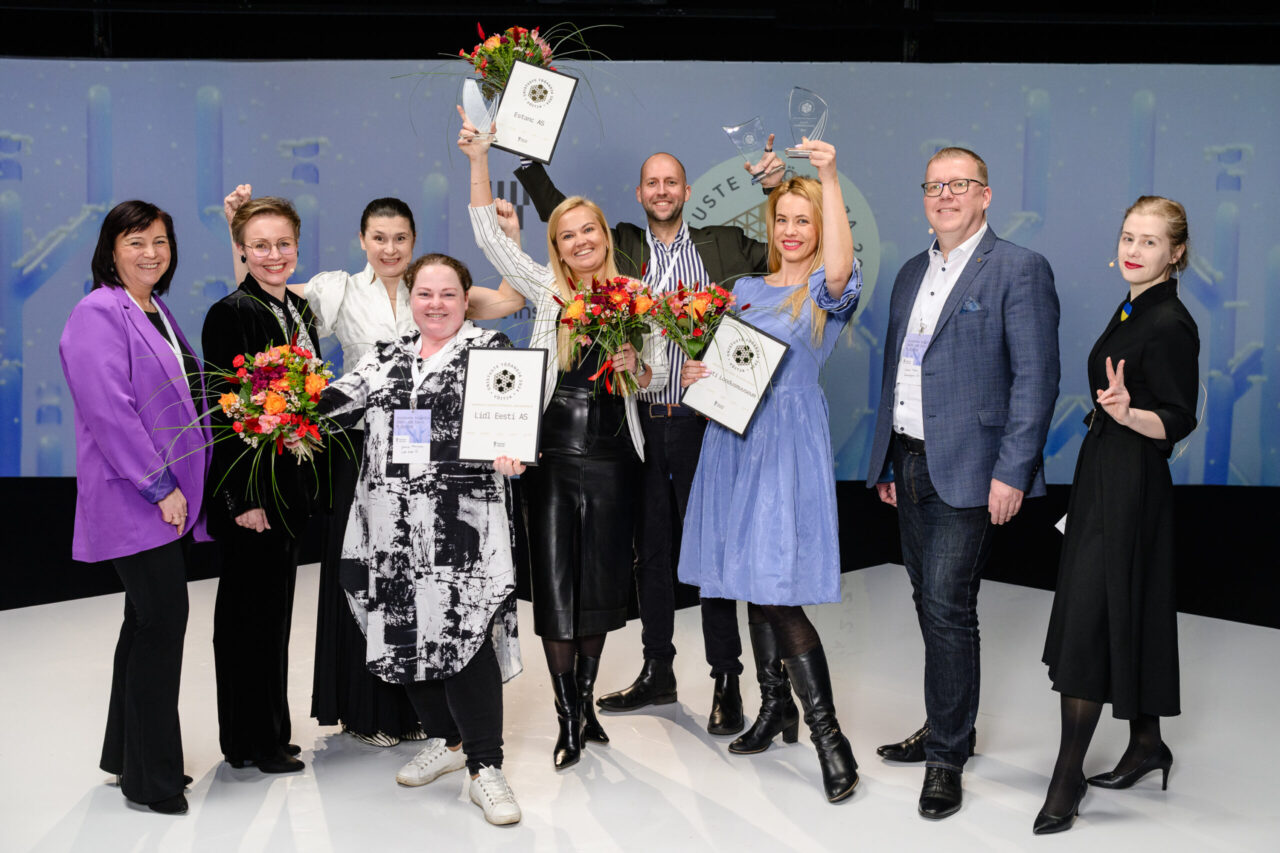Dream Employer competition is focused on employer branding. Combining two aspects – what an organization is like and how it appears to potential employees – seemed like a very important topic, and it has proven to be so over the past 11 years.
Interestingly, at first, organizations highlighted rather nice things like “I can bring my pet to work,” “we have free food in the fridge,” or “we have ping-pong tables in our office.” These were the things that seemed attractive to potential employees as well. However, it has now become clear that organizational culture, people, and work methods matter much more than ping-pong tables or free food.
The Competition and the Jury
Usually, the Dream Emloyer competition consists of two parts: the competition itself, where companies and organizations can register, and a conference. This year, we had 11 participants in total from all sectors. Employees are asked why they like working there, and potential candidates are asked what attracts them to one organization or another. In addition, we receive a description from each organization of what they do for their people. The decision on who to recognize as the best employer is made by a competent five-member jury.
Renita Käsper, HRS Group’s Director of Recruitment and Employer Branding, has been on the jury since the first year and therefore has an excellent insight into the process. Smartgrow CEO Lauri Tabur, who was the Rector of Sisekaitseakadeemia when it won the first Dream Employer competition, has also been on the jury since then. Kristiina Palm’s voice also represents both the winning Unemployment Insurance Fund (Töötukassa) and the leadership of PARE, the Estonian HR managers’ organisation, as well as the wider HR community. Irene Metsis, co-founder of FendaF OÜ, is a highly experienced HR manager, trainer and consultant. This year’s newcomer to the jury from the third sector was Triin Toomesaar, Head of the Network of Estonian Nonprofit Organizations.
Focus on Internal Culture, Not External Shine
We do not evaluate organizations based on how well-known they are, but on what they actually do and what makes them special.
We examine companies and organizations very deeply, and so some of the winners of the competition have come as a real surprise. This was also the case at the Dream Employer competition last year. If you ask someone on the street if the National Archives could be an employer of dreams, many would probably shrug their shoulders. But if you ask people who are involved in the digitization of our national heritage, many will say that it is a super cool organization and it is so nice to see how even in such limited conditions in the public sector it is possible to create a good development culture for employees.
The Winner and the Importance of Culture
This year, for the first time, our competition was won by a manufacturing company, more precisely a metalworking company. Estanc is a family business (not a very large one at all) with a bold and engaging vision that has grown into an international company through change. Employees have embraced the changes, and this is becoming more and more apparent.
“Our goal is to offer technology and engineering solutions to companies systematically. In all of this, we are also clear about what our internal culture needs to be in order to achieve this goal. So we have built our management step by step and brought new people into the team. It is important that the employee and the employer have the desire to move forward together and have a common goal. Estanc uses flexible, change-responsive people-centered management,” explains the company’s manager Priit Haldma.
Focus on change
One of the aims of the Dream Employer conference is to get at least 100 new and innovative ideas from people. We put a lot of emphasis on making them truly meaningful and valuable.
This year, the conference focused on change. In the tougher times, it’s more about how to cope and how the employer brand is increasingly becoming a business function. Whereas in the past, we were always creating new perks and opportunities, now it’s more about culture that holds us together and differentiates us. Culture underpins business, not the other way round as it used to seem. So we were discussing what that culture should be. What can we change ourselves? What could we learn here from the Danes, for example?
The Importance of Top Management Support
Anu-Mall Naarits, CEO of Visionest Institute, summarized: “I am personally very pleased that a large number of the conference speakers were top managers. Everyone has begun to realize that employer branding is not only the task of the HR department or specialist, but in fact, the creation of a brand and a good culture starts at the top. I believe that it is not possible to win the Dream Employer competition unless the top management fully supports employer branding”.
